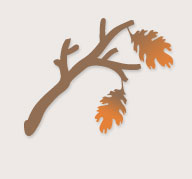
~ Lazarus Long

Prepared for EDTEC 540, Educational Technology, Summer 2006.  This artifact is an incremental analysis and design document, with concomitant job aid.
This artifact is an incremental analysis and design document, with concomitant job aid.
Understand processes such as change, design, development, and learning.
This project was produced for the introductory instructional analysis course (EDTEC 540), which is a prerequisite for acceptance to the San Diego State University Educational Technology program. I came to the course fresh from the operational Coast Guard, and had many options in mind. The best fit was a job aid to assist our shipboard personnel better use their Night Vision Goggles.
This artifact demonstrates the processes standard really well. For the process component of change, the artifact itself underscores some of the impact of changing to different or new equipment. There is both a legacy belief system to overcome (“we don’t do it that way”), and a new system to impart. In the case of the NVGs, the Coast Guard realized the benefit of the equipment, and provided it to the operators, with very little instruction other than “use them”. Our people were using them, and had gained a certain level of proficiency over time, but were not maximizing the potential of the new gear. A very short “lesson” encapsulated in a well-designed performance support tool was just the thing needed.
Although I had completed several Instructional Systems Design (ISD) projects in another graduate program, the breakthrough book Analyzing Performance Problems (Mager and Pipe, 1997) really opened my eyes. Here was a flow chart-based process used to look into any human performance problem. The systematic process really appealed to me, particularly given my engineering and aviation background. The process took out a lot of the guesswork.
Regarding the learning process, it’s fairly obvious that certain tasks are not information intensive, at least not from the standpoint of information that must be retained for instant recall. My final job aid presents material on three different levels. First, learners/operators with NO experience with the NVGs are provided key taxonomy and detailed alignment steps. Second, the intermediate learner has the boldface procedure and highlighted summaries upon which to refer and “brush up” on their technique. Finally, the advanced user can follow just the boldface procedure to augment their automatic skill at each alignment step with a service-wide sequence.
What problem(s) or opportunities arose as you were developing this artifact? What did you learn from engaging that problem or opportunity, and how do you hope to apply in the future the experience you gained?
At first I had no idea how I would be able to access appropriate test learners. Fortunately, one of the local Coast Guard cutters was in port during the initial research, and again for the intermediate testing. It was a chance to discuss the problems surrounding the entire NVG conversion process, and meet with the command cadre, who had opinions of their own.
Many of the problems were not so much with the process, but with the tool itself. It was particularly enlightening to see the difference between my initial idea, and the finished job aid, which incorporated the feedback of the actual users. The final is a much better product! Although I had four years in the field as an NVG instructor, and was a trained pilot myself with several hundred hours in the air under NVGs, my learners gave feedback about some very obvious things, such as adding a title to the page, and producing a black & white version.
In the future, I expect to integrate the feedback of a learner/operator on a much more frequent basis. It will be much easier to access my audience when I’m actually on a base again!
This work showed my ability to integrate earlier learning about analysis, design, and development techniques with new ideas. I know my target audience and can integrate their ideas with ease. This effort also showcased my informational design abilities, as I distilled a forty page book into a single page job with no loss of effectiveness.
The field of Educational Technology is constantly changing, with old concepts being refined and enhanced. I incorporated my former skills with a new “model”, thereby producing a final product with much more depth. It was amazing to see what just a small amount of analysis and design discipline can bring to the performance of operational personnel in the real world of today’s Coast Guard.